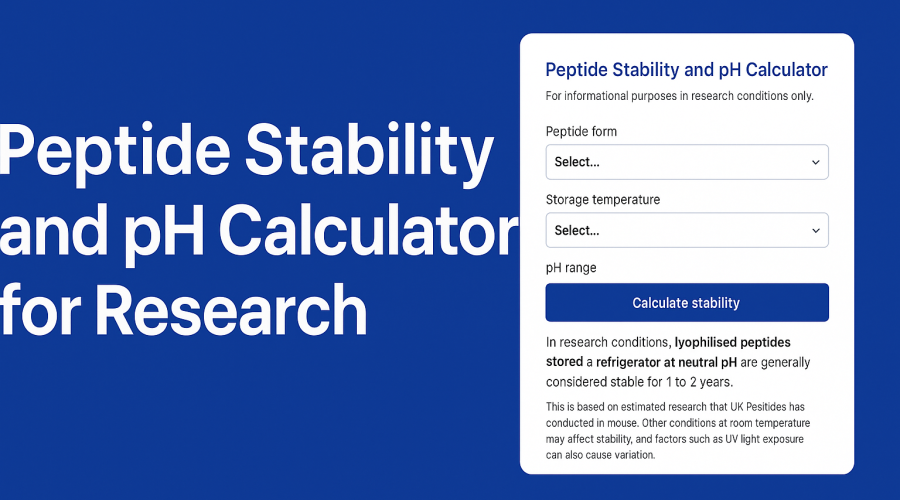13 Aug


Posted By
0 Comment(s)
3965 View(s)
Peptide Stability and pH Calculator for Research
Estimate in vitro stability by peptide form, storage temperature, and pH in a laboratory setting.
Peptide stability in research settings
This quick guide explains how pH, temperature, light, and handling can influence degradation in a laboratory environment. It supports the calculator below so researchers can make informed storage decisions in vitro.
Key factors that affect peptide stability
- Temperature. Refrigeration and freezing reduce kinetic activity, which slows degradation. Avoid repeated freeze–thaw cycles.
- pH. Very acidic or alkaline conditions can increase hydrolysis or side reactions. Neutral pH is generally more stable for many sequences.
- Light and oxygen. UV exposure and oxidative stress can accelerate breakdown. Store out of light with suitable closures.
- Matrix. Lyophilised powders usually show longer stability than reconstituted solutions in research conditions.
Tip: Use the calculator to view a stability window for your chosen form, temperature, and pH. Results are generalised for research. Not for human or veterinary use.
Peptide Stability and pH Calculator
For informational purposes in research conditions only.
This is based on estimated research that UK Peptides has conducted in house. Other conditions at room temperature may affect stability, and factors such as UV light exposure can also cause variation. For research use only.
